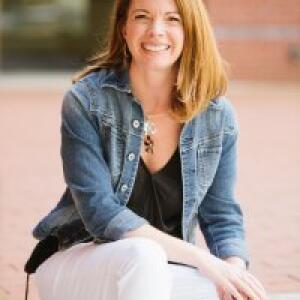Mindfulness Without The “Meditation”
Meditation has been proven to manage stress and anxiety, increase focus, and interrupt negative thought patterns. For a variety of reasons, however, many people don’t feel that traditional meditation is for them: it feels “too woo-woo” to them, that it is counter to their practice of faith, or that it is connected only to the practice of Buddhism. It needn’t be any of those things. In its simplest terms, meditation is the use of a technique to train attention and awareness and achieve a mentally clear and emotionally calm and stable state. Still, whatever a person’s reluctance towards meditation, no practice of resilience or mindfulness can be very effective if a person isn’t comfortable in the practice. Can the benefits of meditation still be achieved in other ways? For the purposes of mental well-being, the answer is yes.
Try some non-traditional meditative activities
Activities that involves repetitive movement can be soothing to the nervous system as well as keeping the mind focused on the present. These can involve fine motor movement like coloring, painting, knitting, or playing an instrument or gross motor movement like running, hiking, mowing the lawn, or dancing. In all of these examples, there is an opportunity (and sometimes a requirement) to pay close attention to our sensory perceptions bringing us into the present and away from rumination and worry.
Mindful eating
This isn’t about what you eat or the amount you eat. This is about how you eat. Too often when we are busy and stressed, we eat mindlessly and quickly. We barely remember what we had for lunch, let alone what it actually tasted like. Eat without the distraction of TV, phones, or reading. Take time to enjoy and actually savor what you are eating. Notice the smells, colors, textures, and tastes of each bite. It doesn’t need to be a fancy meal or anything new. Focusing on the experience at hand (in this case, eating) encourages us to slow down and be intentional. It allows our bodies to regulate and return to a baseline of calm.
Plan for unplanned time
Whether it is for 30 minutes or an entire day, be intentional about creating space to be spontaneous. I know that sounds like a contradiction. When we commit ourselves to time that is open and unplanned, we open ourselves up to creativity, curiosity, relaxation, and rejuvenation. Try something that uses a different part of your brain–or no part of your brain. Speaking of spontaneous, I purchased an above-ground pool for the kids when I realized that the pandemic was going to cancel a lot of summer plans. This spontaneous decision has allowed for more unplanned time floating in the pool during lunch and let me tell you…I come back in ready for the rest of the day. Now…before you go tell your spouse or roommate that you must go by a pool and get me in trouble, let me say it doesn’t have to be floating in the water. Allow yourself the time to do something frivolous. It’s not how you fill the time; it’s allowing yourself the time to fill it however you want.
Do Nothing
When I was a little girl, I would find my grandfather sitting on his front porch in his rocking chair, just rocking quietly staring out at the mountains. When I would ask what he was doing, he would smile and say, “Oh, just twiddling my thumbs.” So, I’d sit beside him and twiddle my thumbs, wondering what he found entertaining about this thumb-twiddling game. I mean…we weren’t doing anything. But that was the whole point. He wasn’t thinking about anything, planning anything, listening or reading anything. Doing literally nothing is healing to our brains and our nervous system. It’s the best, easiest, and cheapest self-care technique there is.
Whether you are a practitioner of transcendental meditation or simply just want to find a way to quiet your overwhelmed mind, these are ways to incorporate mindfulness into your everyday…no mantras or yoga mats required.
About the Author

Renee Branson
Renee Branson, MA, CReC, is a therapist, educator, and advisor to business leaders on building and sustaining well-being in the workforce. Combining 20 years in education, counseling, nonprofit leadership and as a Certified Resilience Coach (CReC), she provides clients with immediate usable tools to increase resilience, well-being and optimism in the workplace. She works with lawyers, legal marketers, business professionals, nonprofit leaders and others to help them incorporate resilience in their professional lives and in the team they lead. Learn more about RBConsulting and follow Renee @reslilientbounty.
Read More by Renee >
